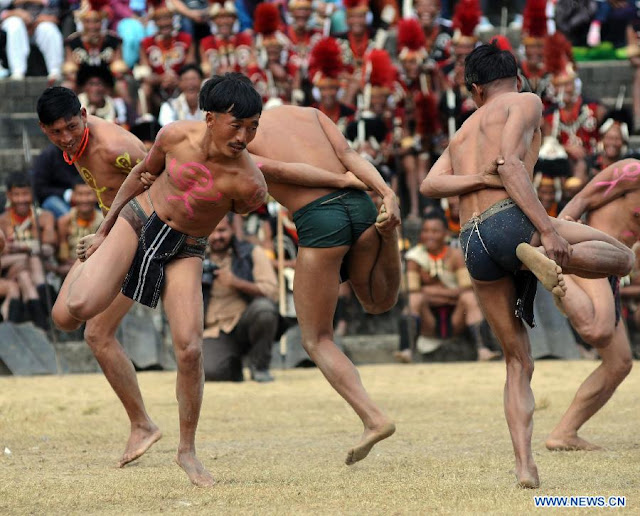#ashokasays Did you know 321:
INCREDIBLE BHARATHA
Festivities are one thing all of us Indians love to be a
part off. There are very popular ones, colourful ones and some are
interesting ones like the Hornbill Festival, also called as the
'Festival of Festivals', in Nagaland.
Nagaland is home to several tribes, which have their own distinct festivals. To
encourage inter-tribal interaction and to promote cultural heritage of
Nagaland, the Government of Nagaland organizes the Hornbill Festival
every year in the first week of December. A unique and enthralling
experience from the land of blue rolling hills of Nagaland – Hornbill
Festival in Kohima, beckons you during these days of December. Situated
at an elevation of 1261 metres is the beautiful Kisama Valley near
Kohima, exhibits the assemblage of 17 tribes.
The festival is named after the Indian hornbill, the large and colourful forest bird which is displayed in folklore in most of the state’s tribes.
The Hornbill Festival provides a colourful mixture of
tribal dances, performances, crafts, parades, games, sports, food fairs
and religious ceremonies. The festival both exposes the culture and
tradition of tribal peoples, and reinforces Nagaland’s identity as a
unique state in India’s federal union.
From local beverages and exciting cuisine, display of
assorted traditional Naga culture in the form of dance and competition, a
heritage motor car rally, Naga wrestling, a pork-fat greased pole
climbing contest, great public art, fantastic momos and rice beer – a
colourful cornucopia of all things Nagaland and North-East India. There
is no dearth of options for immersing yourself in the Naga handloom and
handicrafts in Kisama Village and night market in Kohima town. It’s
photography unlimited at Hornbill Festival and beyond at the exotic
locations in North-East India.
Traditional arts are also featured, with paintings, wood
carvings and sculptures by modern Naga artists on display. Naga troupes
sing folk songs, perform traditional tribal dances and play indigenous
games and sports. In the evenings a programme of music concerts,
catering for all tastes, ensure that the festive spirit continues
through the night.One of the major highlights of this festival is the
Hornbill International Rock Festival that is held at Indira Gandhi
Stadium and local and international rock bands perform here.
And if you are a photographic enthusiast then to capture
different colors all over you should attend the Hornbill Festival. Think
about it.







































